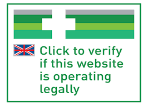Broken toe
A broken toe can be painful, but you do not usually need to go to hospital. There are things you can do to treat it at home.
Check if you have a broken toe
You may have broken your toe if it’s:
- red or bruised
- painful and swollen
- difficult to walk on
Do not worry if you’re not sure if it’s broken or just bruised, treatment is usually the same for both.
Urgent advice: Go to an urgent treatment centre or A&E if:
- you think you have broken your big toe
- your toe is pointing out at an odd angle
- the bone is sticking out of your toe
- you have a bad cut or wound after injuring your toe
- there was a snap, grinding or popping noise at the time of injury
- you have severe pain
- you have any tingling or loss of sensation in your toe or foot
- it’s your child that has hurt or broken their toe
You may need further treatment in hospital, such as a boot, cast or surgery.
Find an urgent treatment centre
What we mean by severe pain
- Severe pain:
-
- always there and so bad it’s hard to think or talk
- you cannot sleep
- it’s very hard to move, get out of bed, go to the bathroom, wash or dress
- Moderate pain:
-
- always there
- makes it hard to concentrate or sleep
- you can manage to get up, wash or dress
- Mild pain:
-
- comes and goes
- is annoying but does not stop you doing things like going to work
What you can do about a broken toe
Doctors will usually suggest you treat a broken toe at home first if:
- it’s not your big toe
- the bone is not sticking out of your foot
- your toe is not pointing at an odd angle
- there’s no wound on your toe
Broken toes usually heal within 4 to 6 weeks, but it can sometimes take several months.
Do
-
take ibuprofen and paracetamol for the pain and swelling
-
rest your foot and keep it raised
-
hold an ice pack (or bag of frozen peas) wrapped in a towel on your toe for up to 20 minutes every few hours
-
wear wide, comfortable shoes with a low heel
-
avoid walking around as much as possible
-
strap up your broken toe – put a small piece of cotton wool or gauze between your sore toe and the toe next to it, then tape them together to support the sore toe
Don’t
-
do not strap up your toe if it’s pointing out at an odd angle or you have hurt your big toe – get medical advice
-
do not put ice directly on your skin
-
do not walk or stand for long periods
-
do not wear tight, pointy shoes
-
do not play any sports like football, rugby or hockey for 6 weeks or until the pain eases
-
do not try and treat your child’s toe – take them to an urgent treatment centre or A&E
You can ask a pharmacist about:
- the best painkiller to take
- what you need to strap up your toe
- if you need to see a GP
Non-urgent advice: See a GP if:
- the pain and swelling has not started to ease after 2 to 3 days
- it still hurts to walk on after 6 weeks
- you have diabetes – foot problems can be more serious if you have diabetes
They may send you for an X-ray to see if you need any further treatment.
Coronavirus update: how to contact a GP
It’s still important to get help from a GP if you need it. To contact your GP surgery:
- visit their website
- use the NHS App
- call them
Page last reviewed: 18 January 2019
Next review due: 18 January 2022




